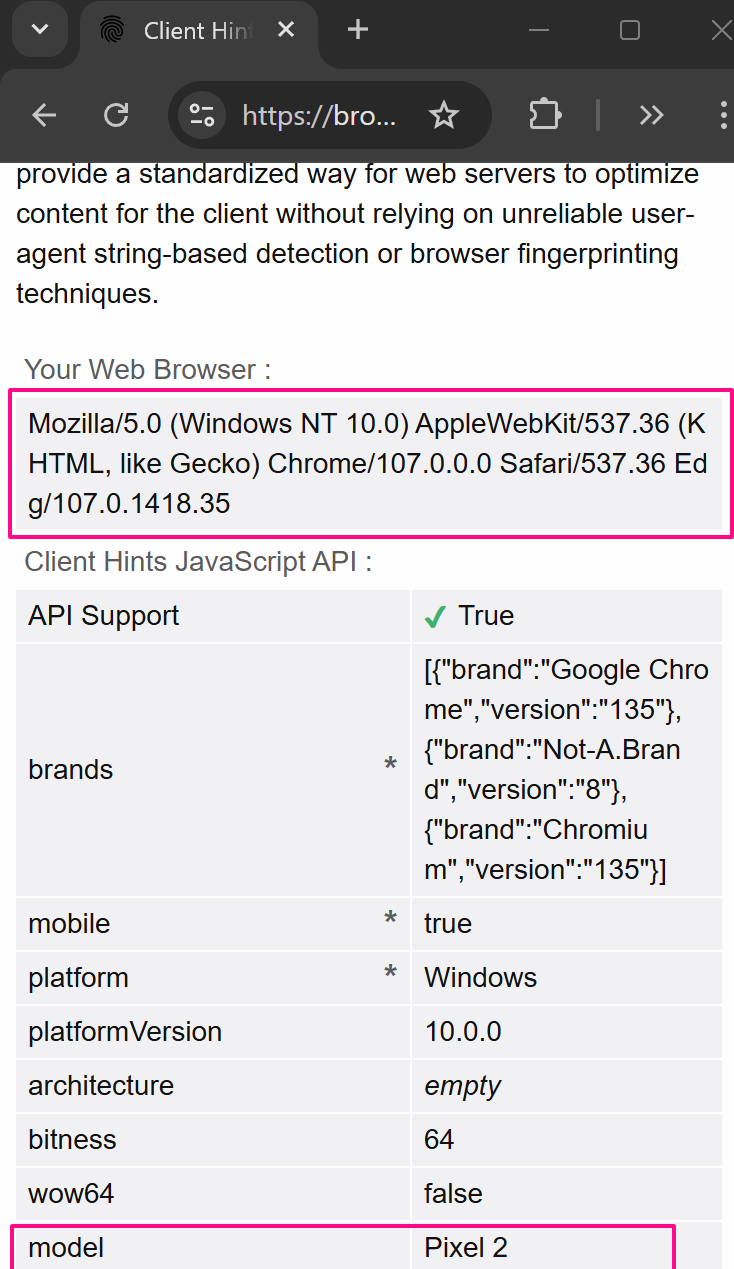Workflow Settings
You can set custom configurations for each workflow by clicking the gear icon in the workflow editor.

Workflow settings include: General, Table|Table List, Blocks, Emulator
General
This section contains the following settings:
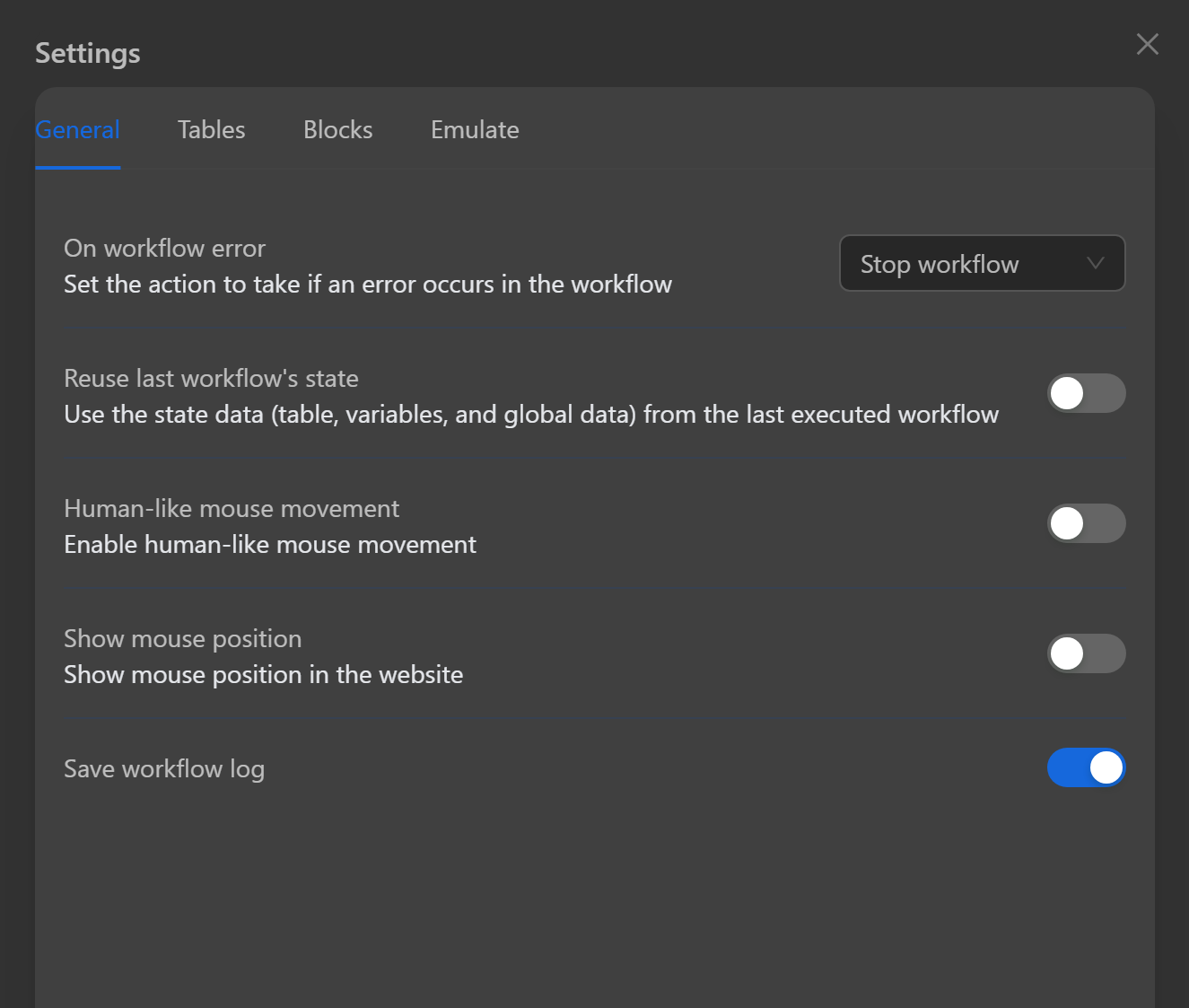
When the workflow encounters an error
- Choose an action when an error occurs during workflow execution
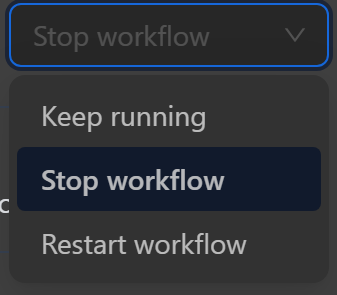
- Continue running: Continue the workflow even if any node fails
- Stop workflow: Halt the workflow at the node that encountered the error
- Restart workflow: Restart the workflow from the beginning for the number of times specified in the Times field

Reuse last workflow state
- Use the state data (tables, variables, and global data) from the last execution.
Example
Create a simple workflow with a Condition node that checks if variable b equals 1.

If b == 1, output the value of variable b using a Log node:
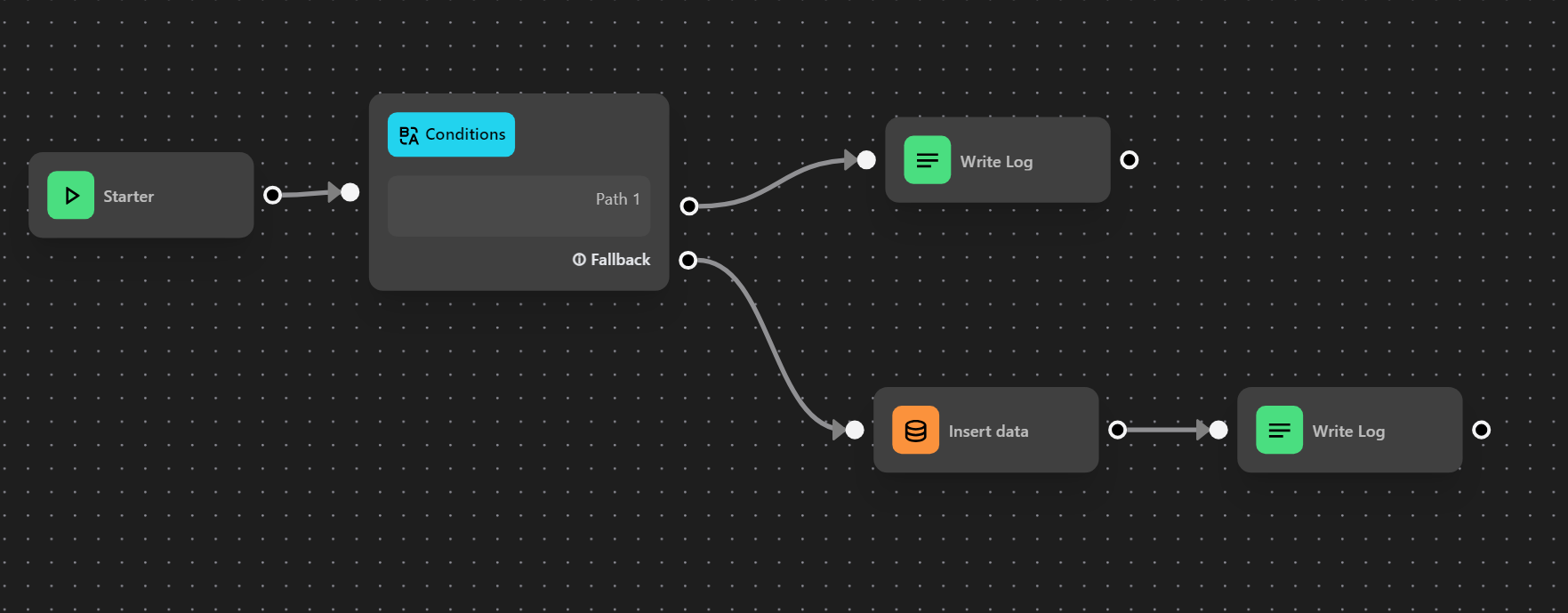
If not, assign b = 1 using an Insert Data node and then log it:
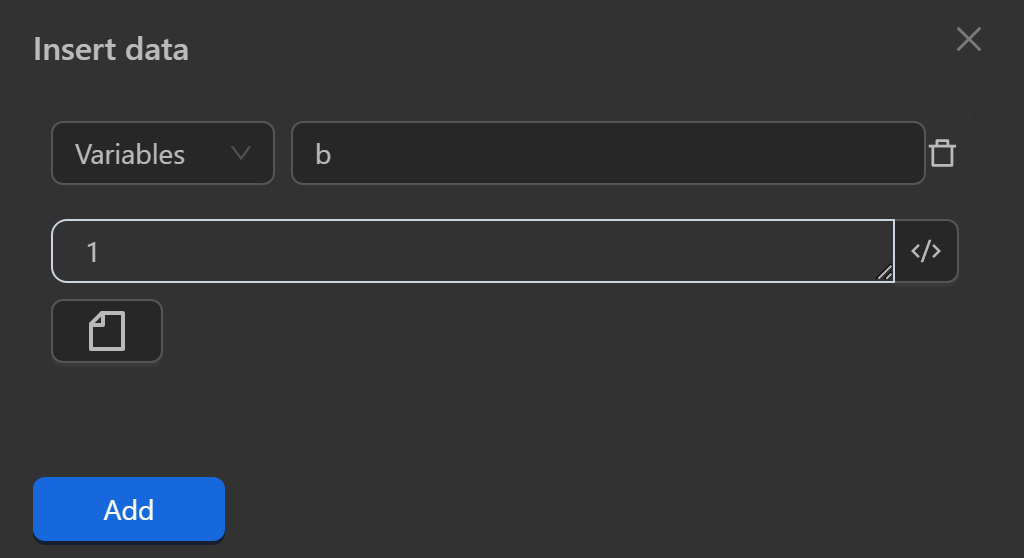
In the first run, since b is undefined, the workflow runs the "Else" branch and assigns and logs the value:
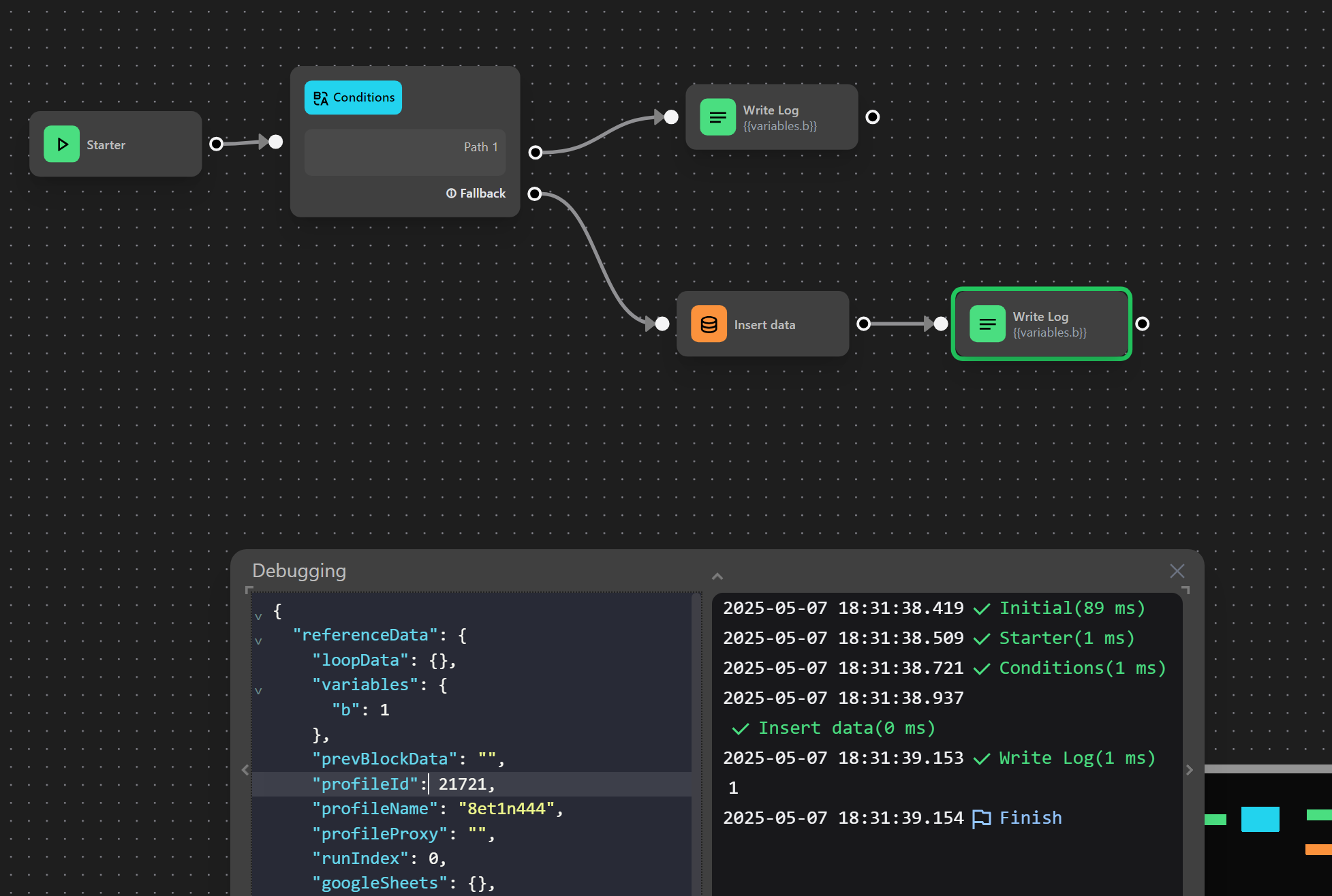
Now enable Reuse last workflow state:

In the second run, the value of b is retained as 1, and the workflow takes the "If" branch and logs the value:
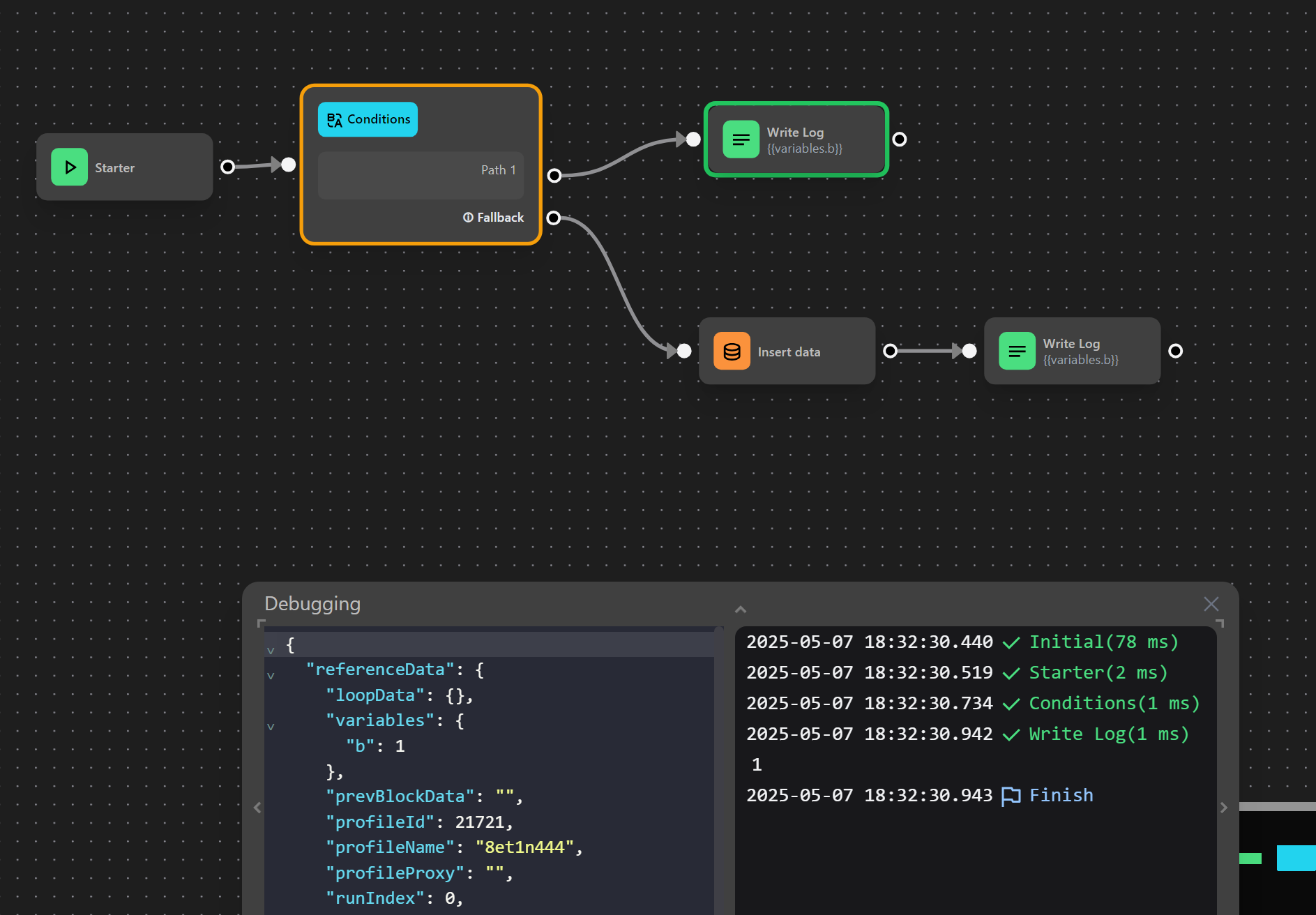
Simulate mouse movement
- When enabled, the cursor will move slightly before interacting with an element
Show mouse position
- Displays a circle at the current cursor location during execution

Save workflow logs
When enabled, the workflow will display execution logs under Runtime logs and Automation Flow -> Log
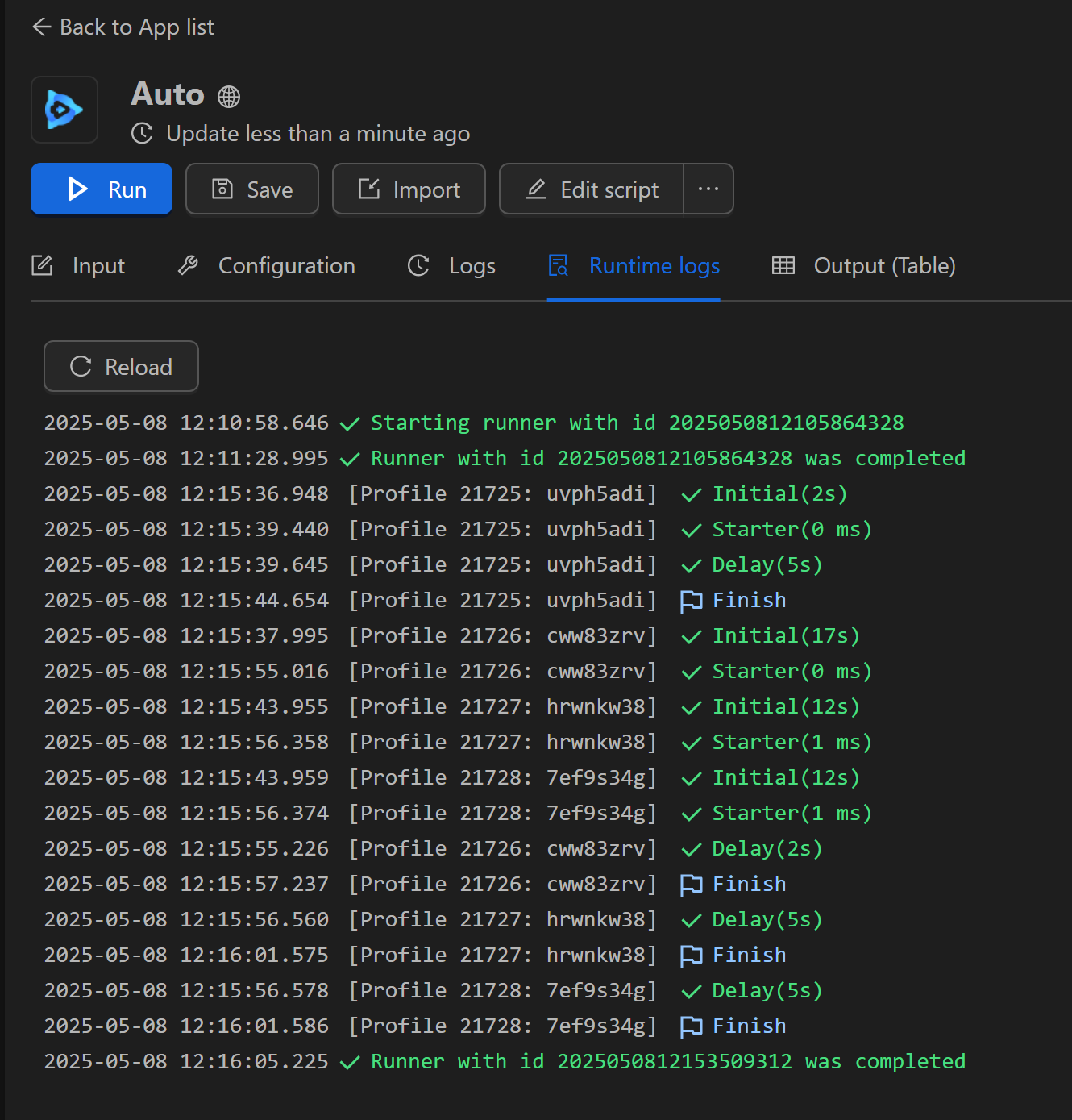
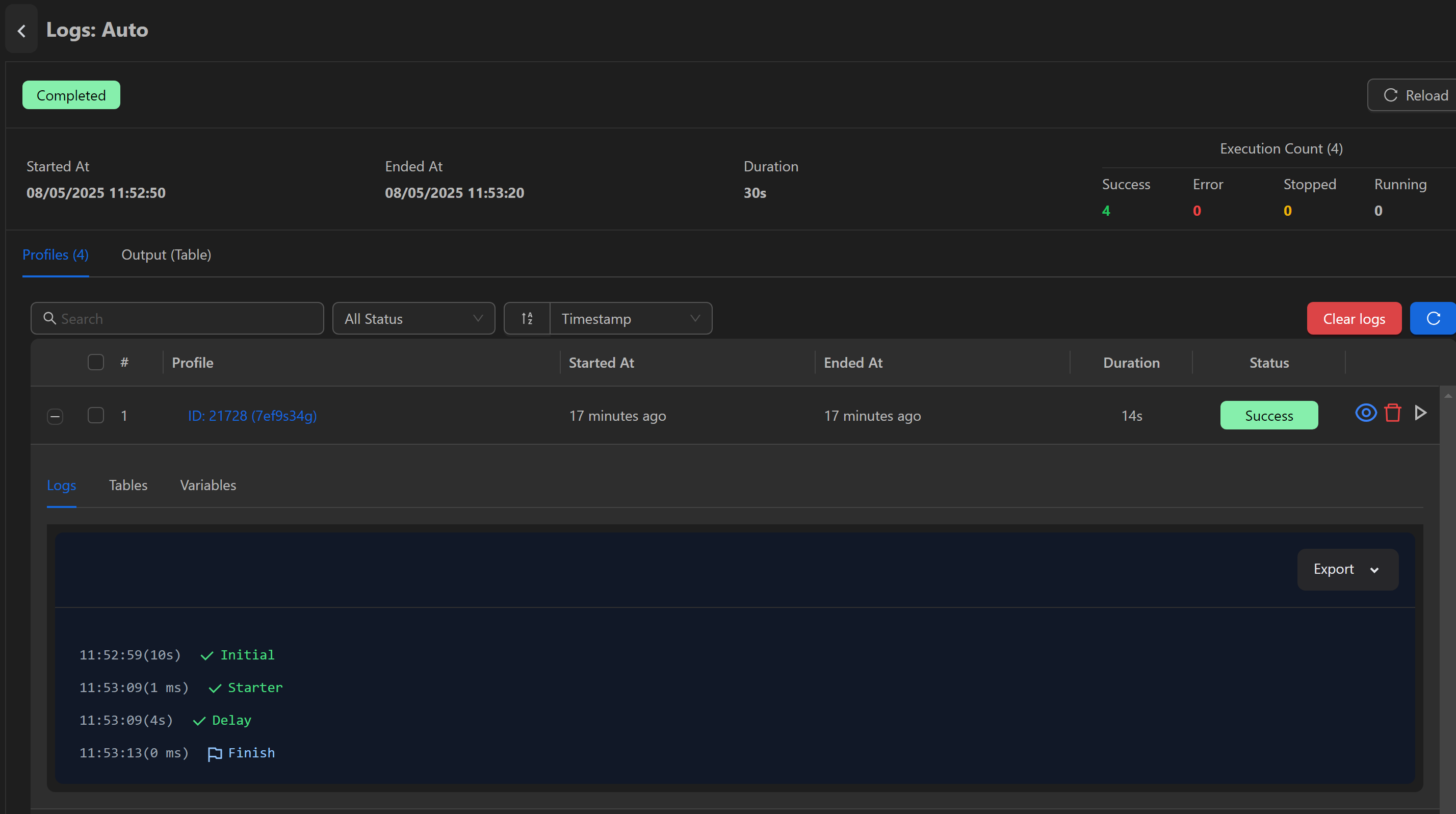
- When disabled, no logs will be saved or displayed
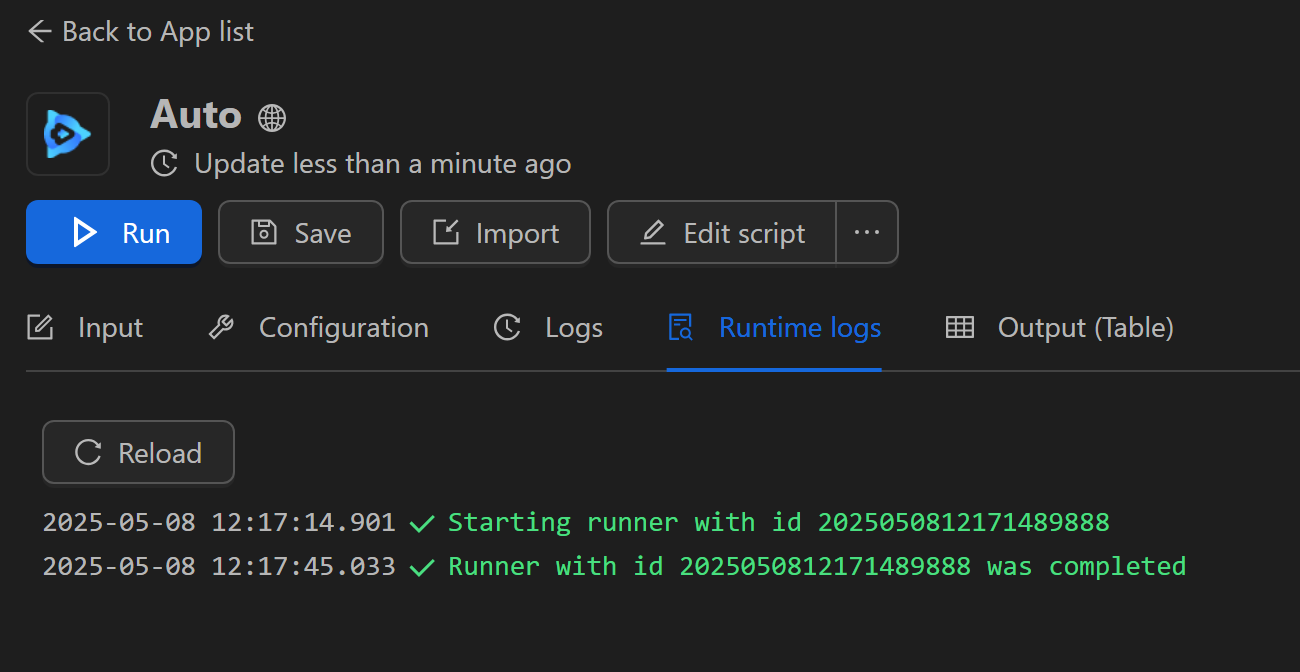
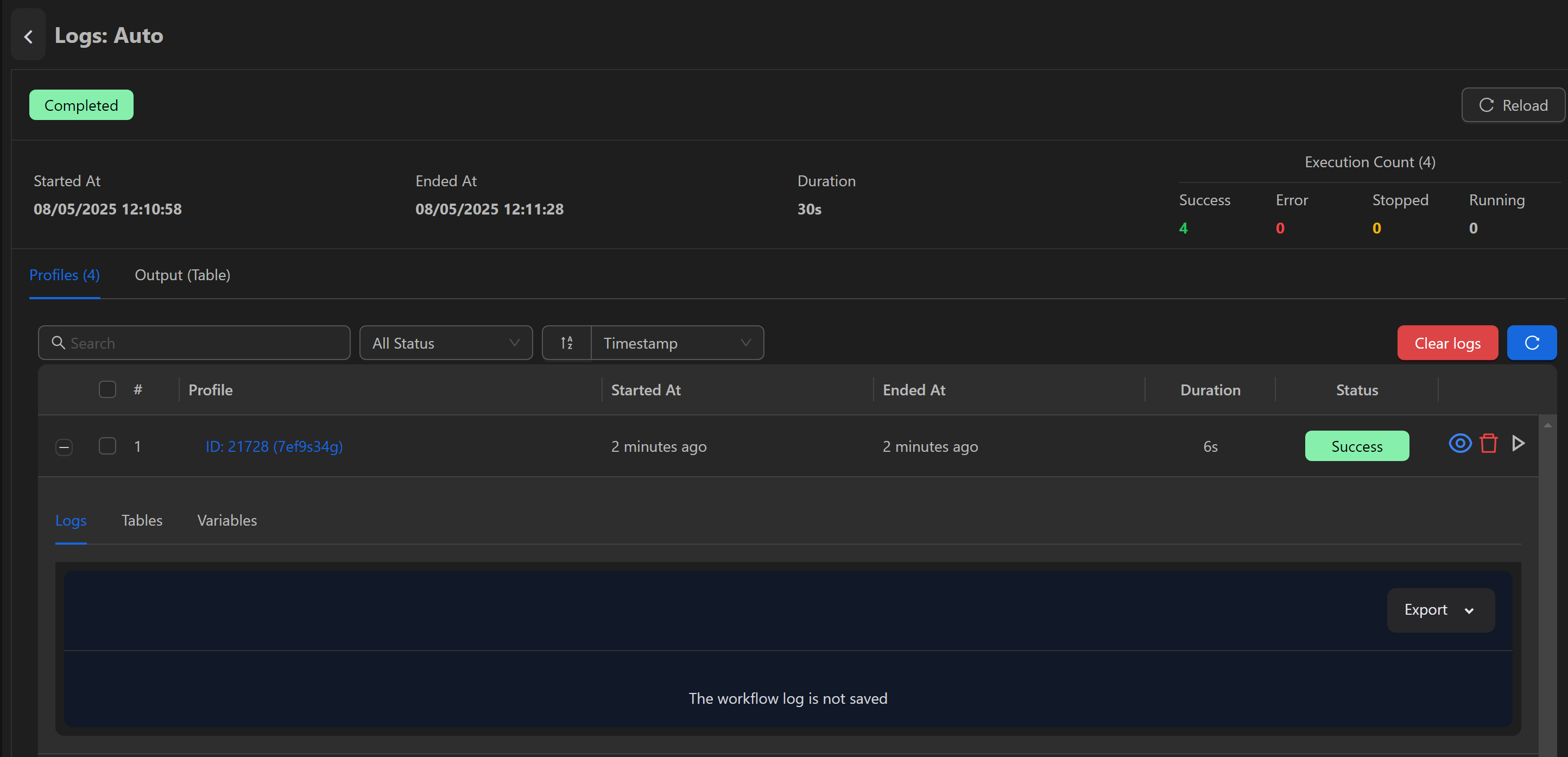
Table|Table List
- Insert into default column: When enabled, allows inserting data into the default column if no column is selected in the node
- Default column name: Choose a name for the default column; if left blank or set to default, it will always be
column
Example
With the configuration below:
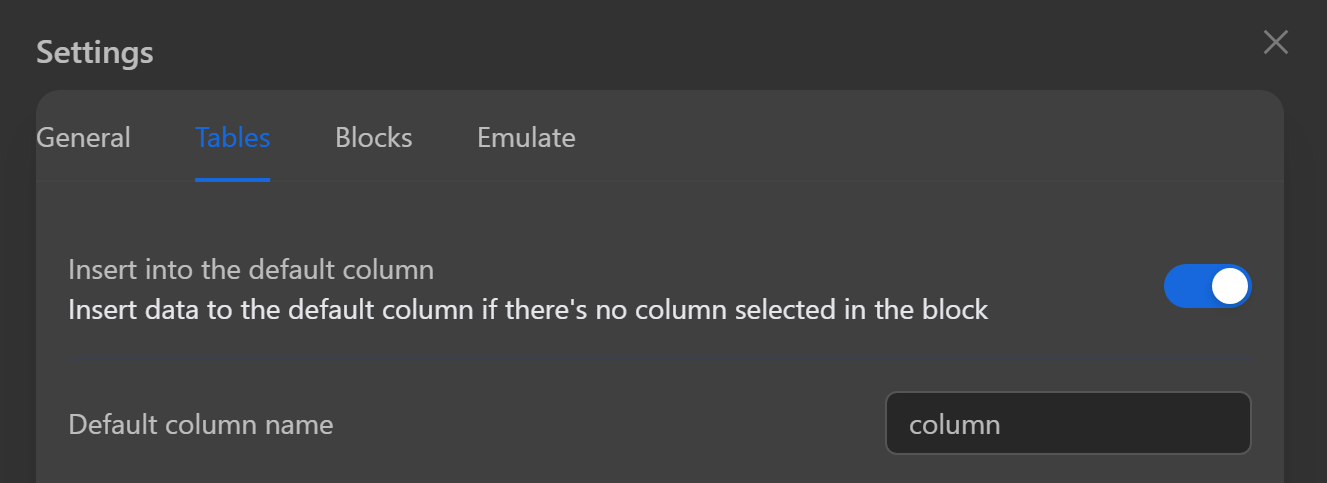
Run a workflow with two nodes: Get Tab URL and Export Data, configured like this:
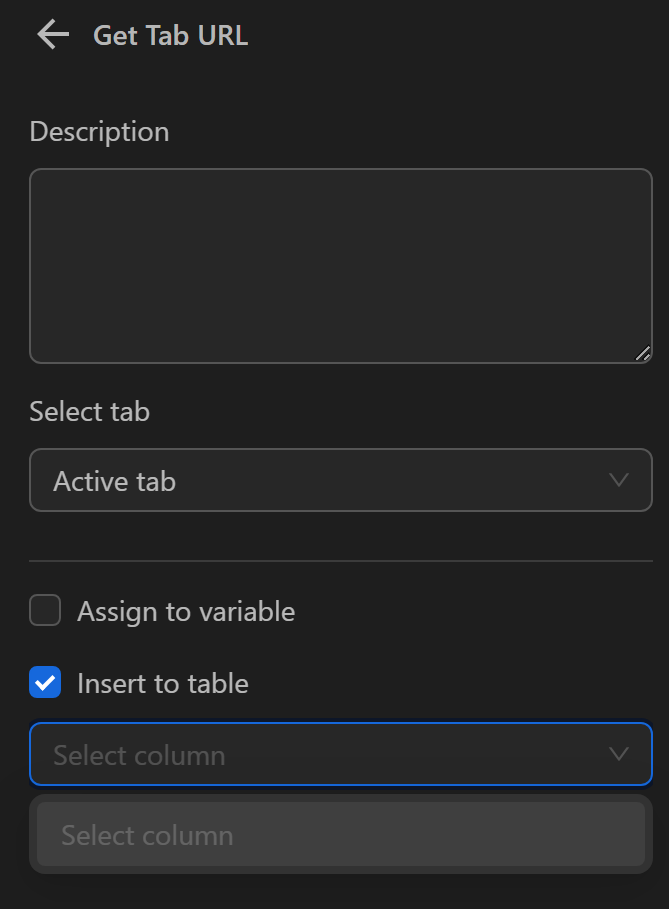
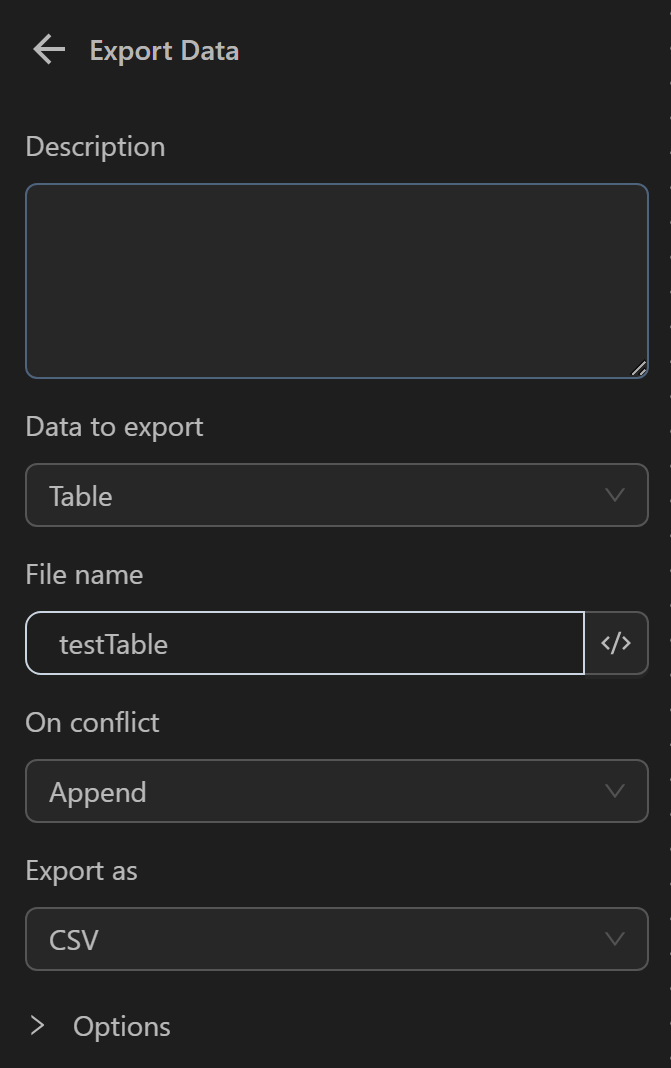
After execution, open the file and you'll see the data in the default column column:
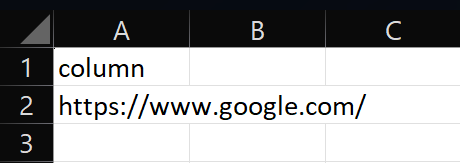
To use a different name, just change the Default column name to column1
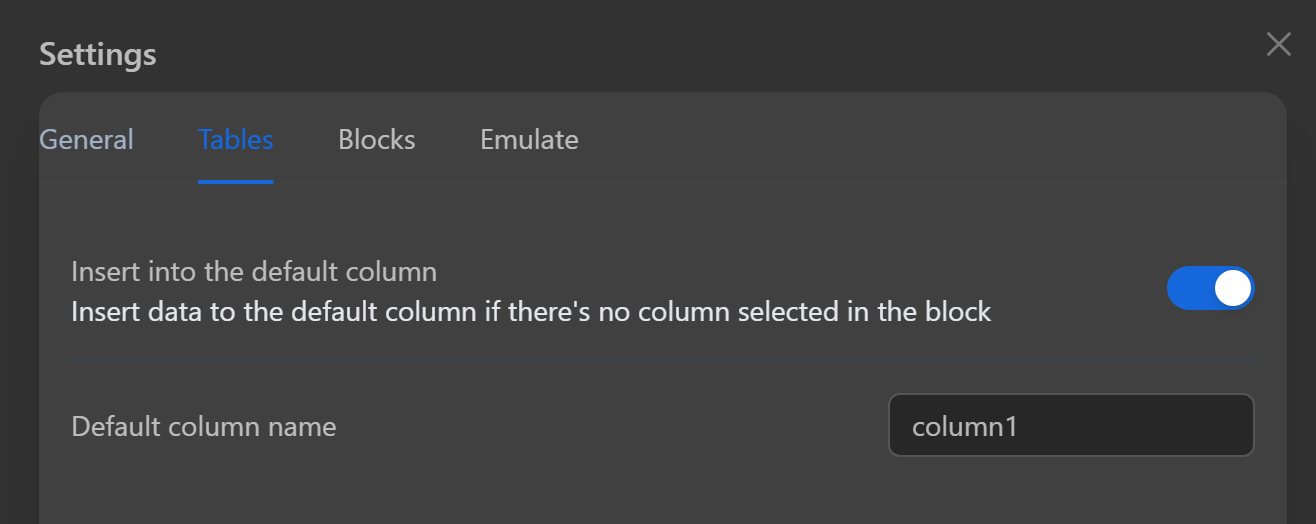
The exported data will reflect the new column name:
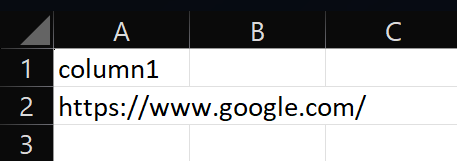
If this setting is disabled, no data will be inserted due to no column being configured:

Blocks
Block delay (ms)
Adds a delay between nodes in milliseconds

Example
In a workflow where you want a Delay node to run, then wait 5 seconds before a Delay node executes. After execution, the Delay node completes, and after 5 seconds the Delay node runs:
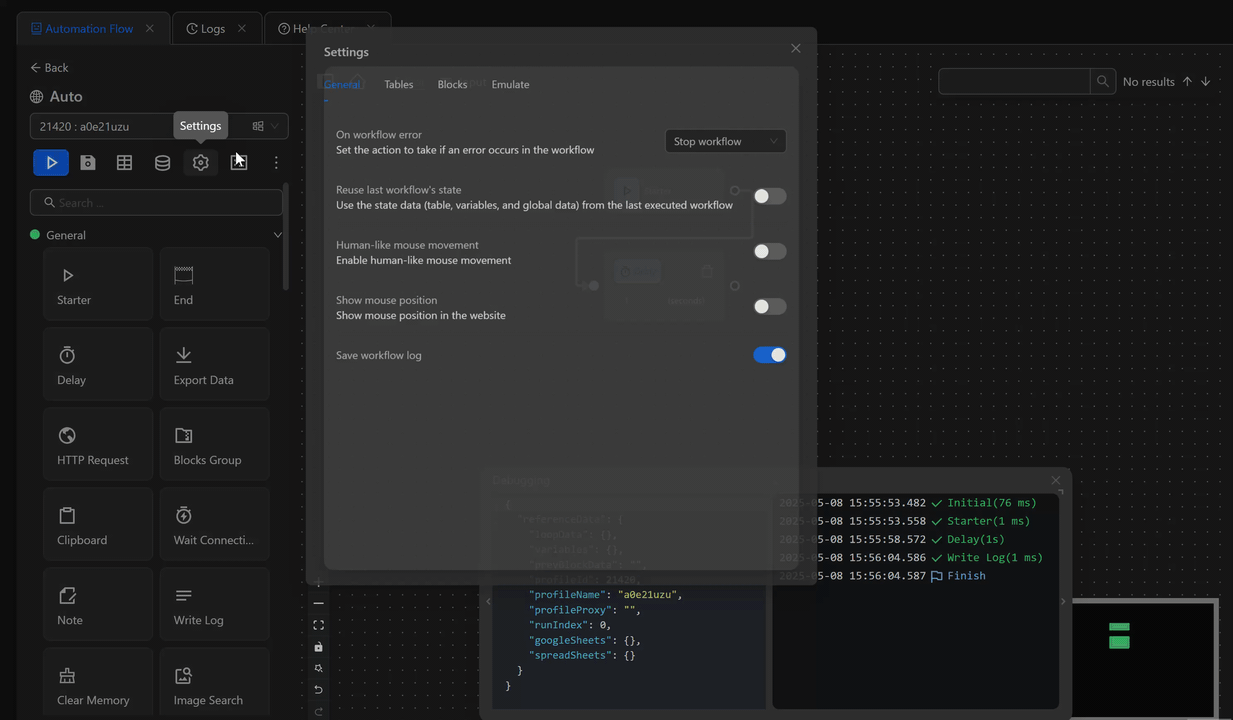
Tab load timeout
The maximum time to load the tab in seconds; enter 0 to disable the timeout. If the scheduled time is reached and the web hasn't loaded, that node will encounter an error. Typically, the Open URL node is suitable for this feature.
For example, when you configure it like this, if the Open URL node is still running after 30 seconds, that node will fail. 
Emulate
This option lets you simulate an Android mobile browser and change the UserAgent for your profile during workflow execution
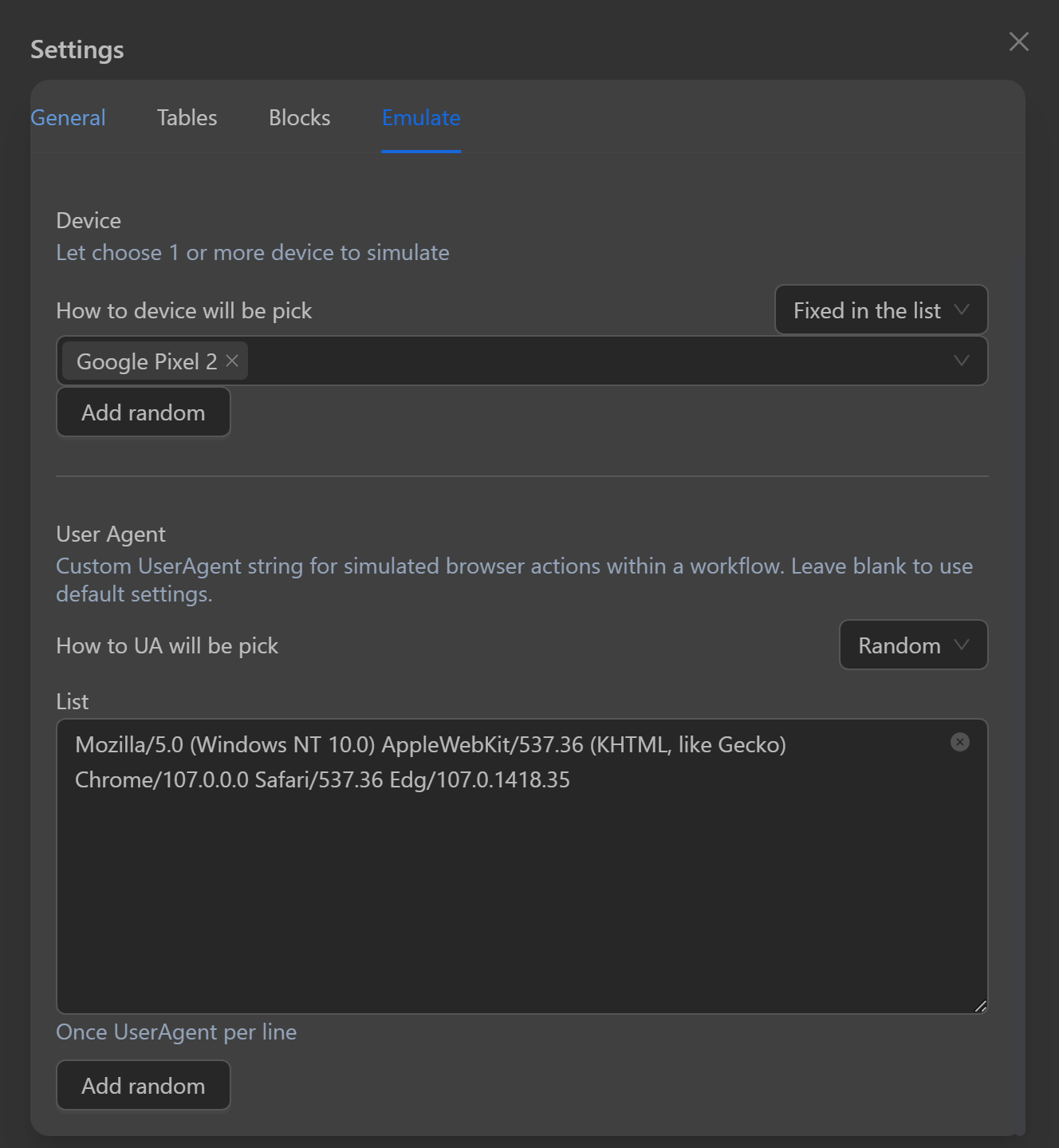
Enable Emulator
Enabling this option reveals related functions
Device selection method
- Fixed from list: always use the first device in the list
- Random: randomly choose a device from the list
Add randomly
- Add random devices to the list
User Agent
- Leave blank to skip. If filled, this UserAgent will be used when launching the browser for this workflow.
User Agent selection method
- Random: randomly choose one from the list
- Fixed from list: use the first one in the list
- List: list of UserAgents to be used
- Add randomly: add UserAgents to the list
Example
Here you will change the UA and Device for the profile as follows

After setting it up, you need to turn it off and then back on to apply the emulation.
Then, you go to the page https://browserleaks.com/client-hints to check the Device value on the app, which corresponds to model, and User Agent, which corresponds to HTTP User-Agent shown on the website after the change.
The values before emulation are as follows
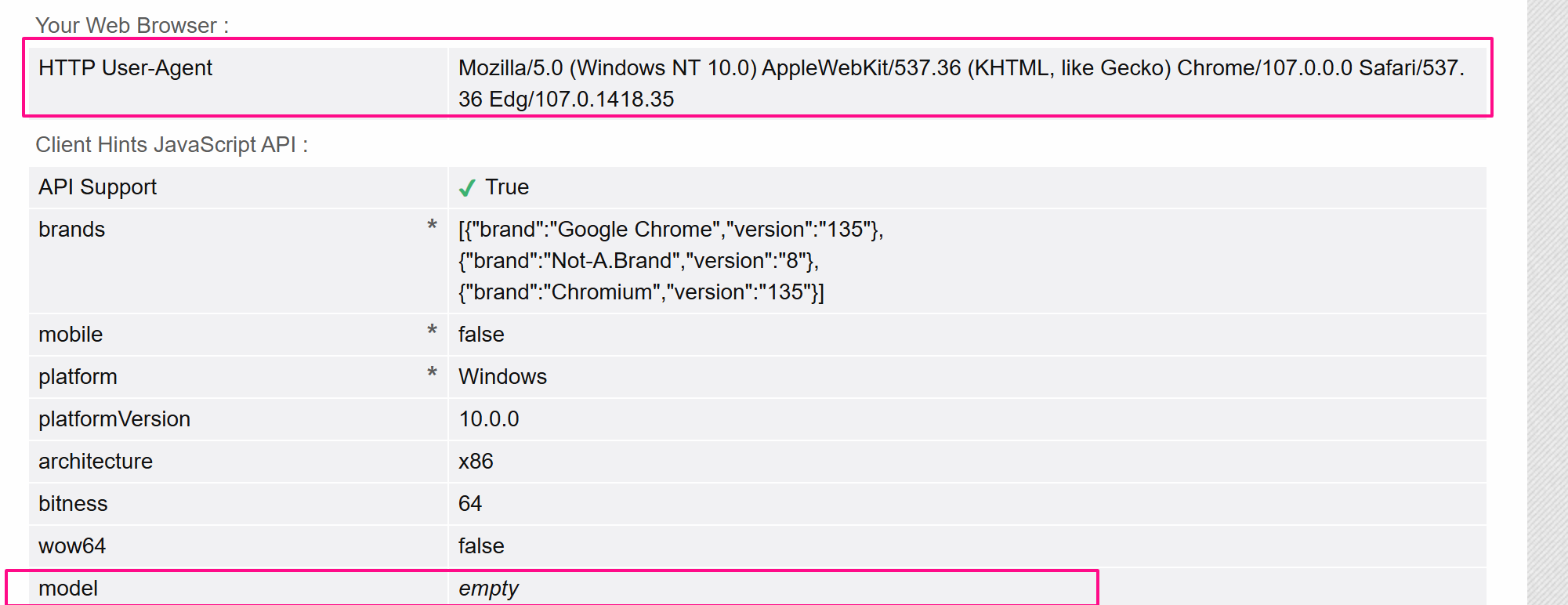
And after emulation, the parameters are
